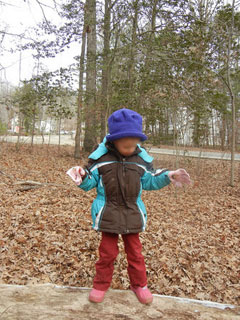Sensory Defensiveness
Each person with sensory defensiveness develops his own set of behaviors. Usually combinations of sensory avoidance and sensory seeking behaviors. The following is a partial list of common symptoms to each of the sensory systems. These symptoms may differ from mild, moderate, and severe levels.
Types Of Sensory Defensiveness
Tactile Defensiveness
People with tactile defensiveness avoid letting others touch them, and may touch, grab, push others in an effort to control touching. They frequently resist hair washing and cutting, nail clipping, face washing. They may act like their life is being threatened when being bathed or dressed. Frequently irritated by clothing, waistbands, certain fabrics, labels, or new clothes. They may avoid crowds and the unexpected touches that can occur. They may be agitated or even go into a flight/fight response when bumped by someone accidentally. They may be unnecessarily rough, bumping, crashing, and tackling on purpose as a way of seeking sensation. They may be very over responsive or very under responsive to pain. They often do not like to get their feet or hands dirty.
Oral Defensiveness
Some children dislike certain flavors, textures, or temperatures of food. May be under/or over sensitive to spicy foods. They may avoid putting any objects in their mouth, or may 'mouth' things, anything, constantly. They may intensely dislike tooth brushing, and may cry; "It hurts!"
Many children have had a variety of feeding problems since infancy. They may gag, overstuff, and choke. These are the children who will 'eat anything' ...or will only eat very few foods.

Gravitational Insecurity
An irrational fear of change in position or movement. These children are often fearful of having their feet leave the ground, or having their head tipped backward. They do not like swings, slides, or any movement that they are not firmly planted. Some children do not want to learn how to swim, exhibiting the same insecurity when in water. Floating can be frightening for them.
Postural Insecurity
This is a fear and avoidance of certain movement activities due to poor postural mechanisms.
Visual Defensiveness
With this, children may be very oversensitive to light. They may avoid going outside on sunny days. Complain it hurts their eyes. They startle more easily and/or avert their eyes or seem to avoid eye contact. They may complain the TV is too bright. The lights in the house, too bright. Fluorescent lighting may agitate them.
Auditory Defensiveness
Over sensitivity to certain sounds, or frequencies. They may be fearful, or irritable when subjected to certain sounds. They may cover their ears and cry. Vacuums, motors, sirens, water running, toilets flushing, volume on the TV...many different sounds can trigger a fearful, or aggressive response. Children may even make excessively loud sounds to try to block out the offensive sounds.
Olfactory Defensiveness
Certain smells may make a child agitated. Smells may be heightened and acute. May turn away from certain toys, foods, clothing, or people due to they way they smell. May literally throw up if subjected to smells that make them nauseous.
Treating and Coping with Defensiveness
Okay! Now that we see that there is more to this sensory defensiveness than just the skin... let's talk about what we can do to help our kids overcome this!
Awareness
The single most important step, I believe, is becoming aware of the symptoms and behaviors associated with sensory defensiveness. Usually done with the assistance of a trained OT, who performs a thorough sensory history. Most of these behaviors have been attributed to something else, other than a negative reaction to sensation. Once we realize what are reactions, and not a deliberate plan of an obstinate, defiant child, we can get to work on helping them.
Sensory Diet
This concept is based on the idea that each child requires a certain amount of activity and sensation to be most alert, adaptable, skillful, and calm. By careful planning we can use sensory input to help a child feel safe and organized in thought and movement throughout the whole day.
We use special activities, geared to each child's particular needs, at intervals during the day. When a disruptive event is about to occur, we can present specific sensory input, which prepares the child, and prevents a defensive response. We use activities that are appealing and fun to the child, which are much more effective when the child is interested and especially when the child himself directs them.
Adult involvement can be limited in that we can make activities available, set up the environment, and supervise for safety. We often play with our children, showing them different kinds of appropriate play that will help them.
If your child has a problem with oral sensitivity, over/or under... ask your therapist to demonstrate Ms. Wilbarger's suggested technique for Oral Defensiveness.
Also, ask your therapist to carefully list for you all the different identified sensitivities, and appropriate play or exercises to help. Each child has different needs.
Sensory Defeniveness can be reduced and/or eliminated with the correct amount and types of activities to address it. As this is reduced, the behaviors that accompany it, will also be reduced. Keep in mind, therapy is maximized with family involvement.
based on principles from "Sensory Defensiveness in Children Aged 2-12: An Intervention Guide for Parents and Other Caregivers", by Patricia and Julia Wilbarger, 1991, printed by Avanti Educational Programs.